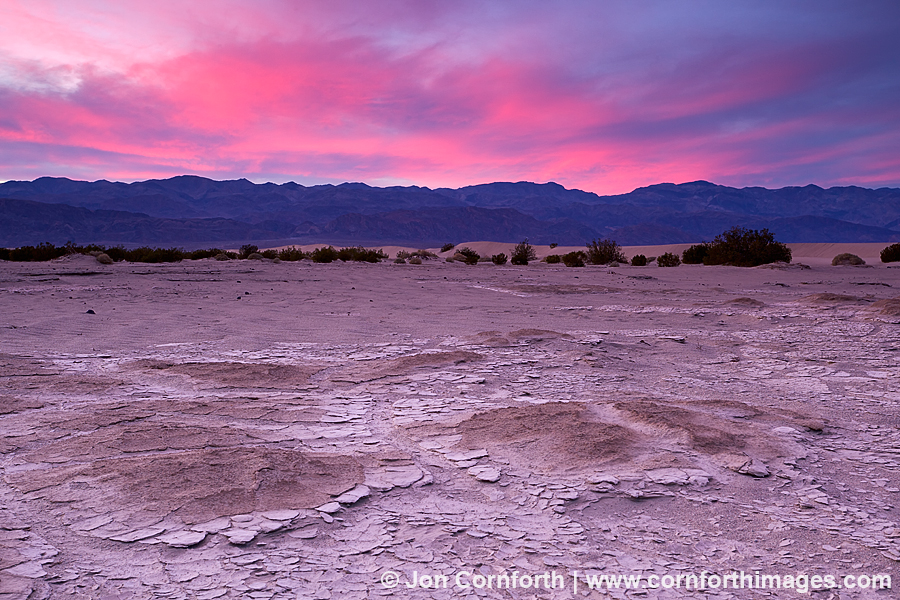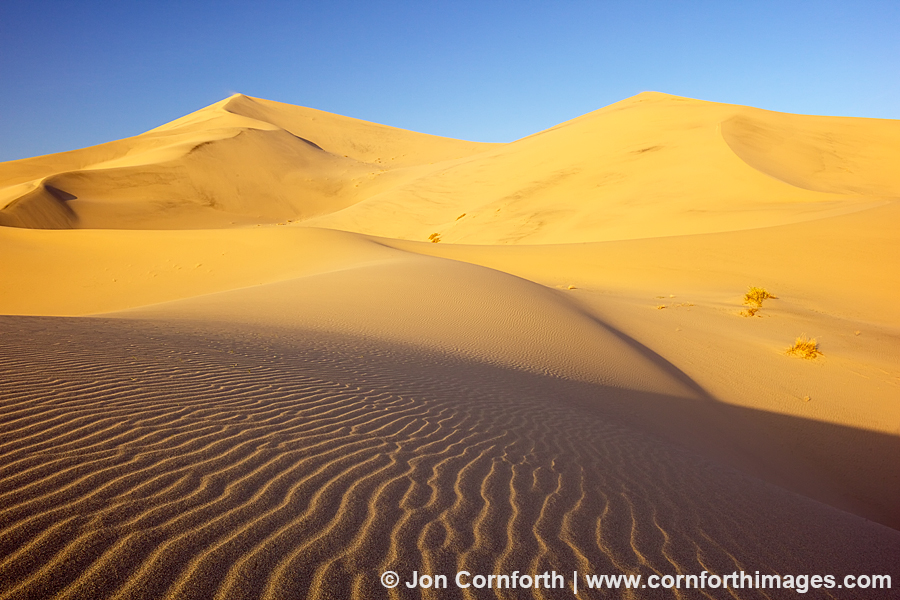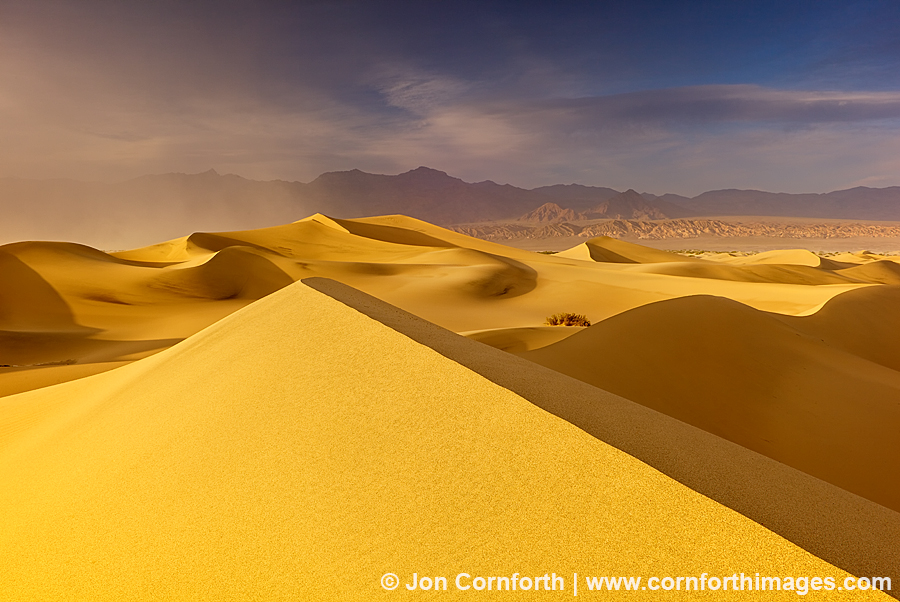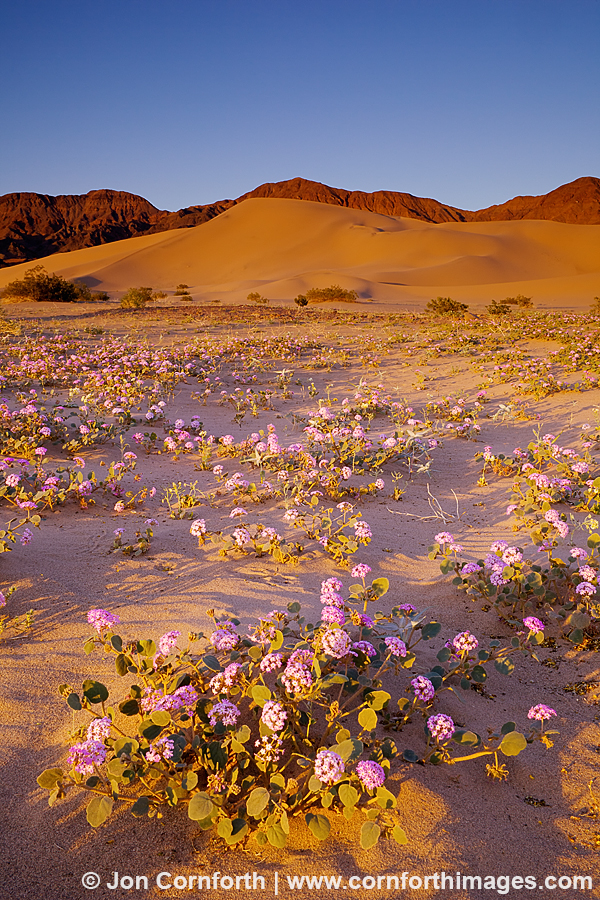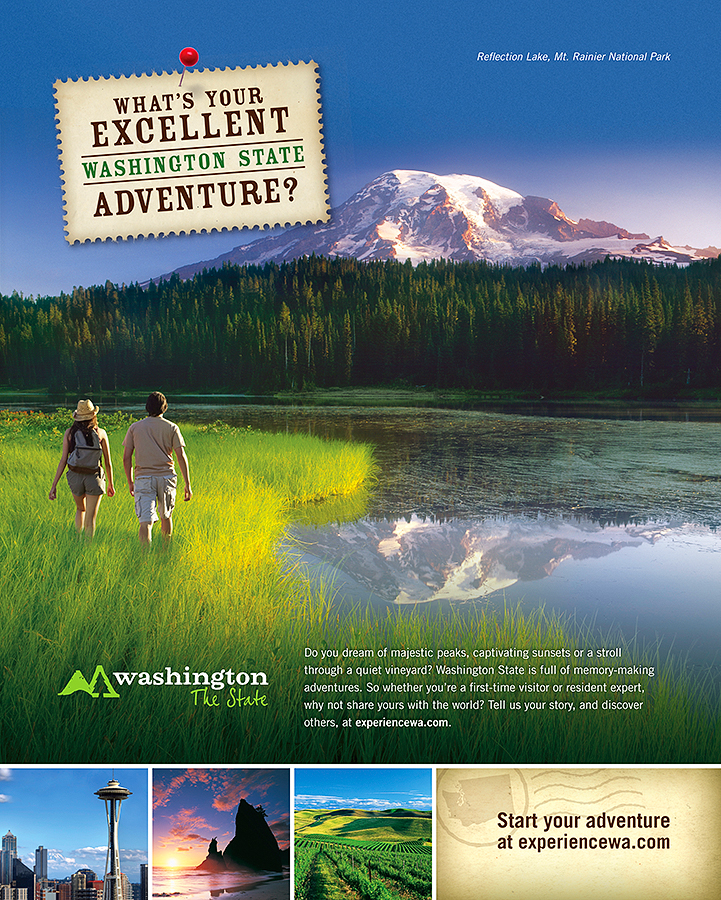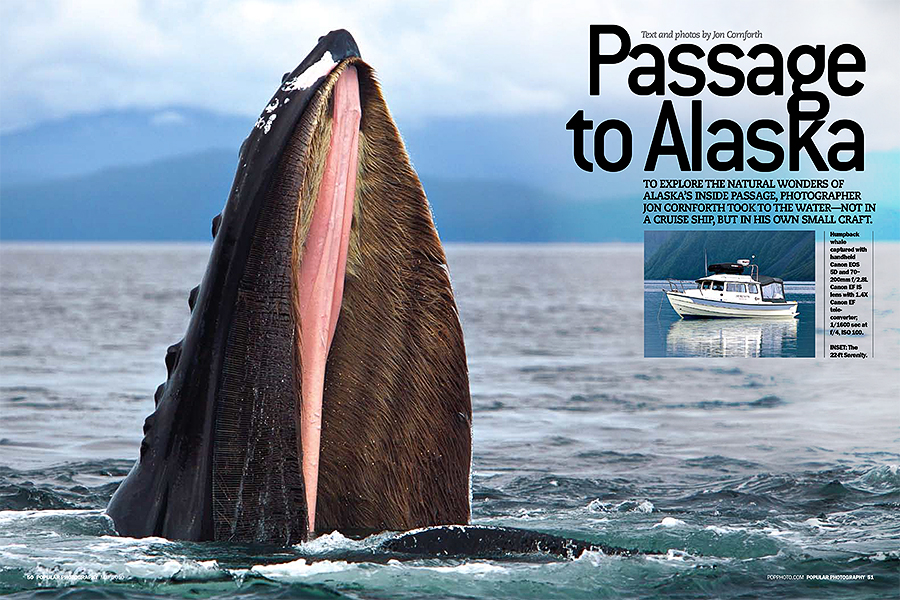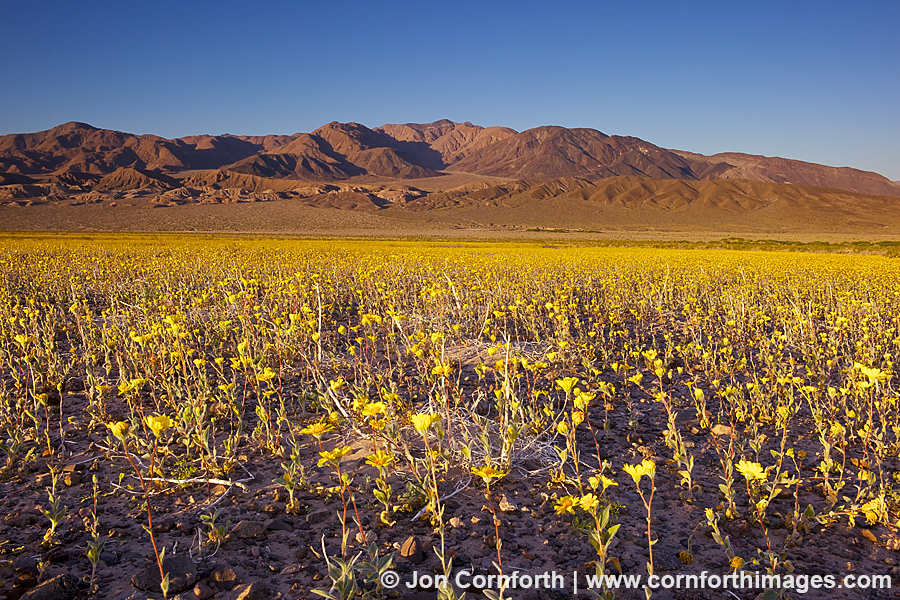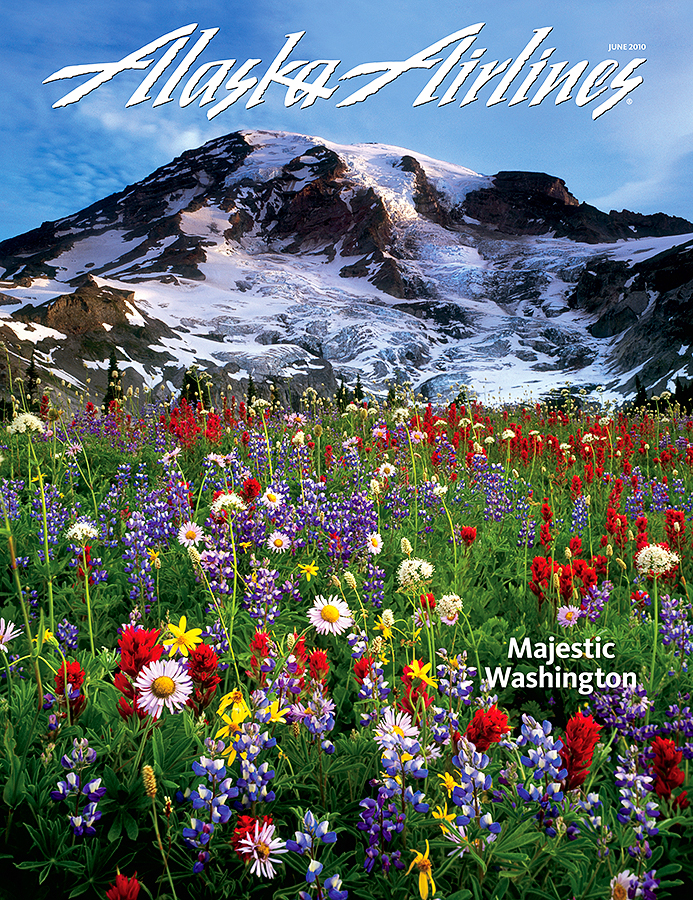
Alaska Airlines June 2010 Cover
Posted onI am pleased to share my latest publishing accomplishment. My “Paradise Wildflowers” image from Mount Rainier National Park is the June 2010 cover on Alaska Airlines! This is also my 2nd cover with them this year. This picture is my all-time most successful art print and has been licensed numerous times since I created it in 2003. Most of my regular readers will know that I shot all of my landscape images up until last year with a Pentax 67 system. One of the challenges of that system was that I had limited depth-of-field compared to a 35mm system. In order to overcome that limitation, I created this image with Toyo 4×5 view camera, a Rodenstock 65mm large format lens, and a Horseman 6×9 roll film back. (Did I lose you, yet?) With the large format camera, I tilted the lens so that the flowers would be close to the camera while keeping the summit of Mount Rainier in focus. I also used my Singh-Ray Warming Polarizer and 2-stop Hard Graduated Neutral Density filter with Fuji Velvia film. I think that the exposure was about 10 seconds at f32, which is a life-time when waiting for a slight breeze to stop rustling the wildflowers. Now when I photograph flower landscapes like this, I use my Canon 5DmkII with a wide-angle lens with camera settings more like f16, 1/4 second, and 200 ISO. Since this was the first image that I ever took with my 4×5, I was still learning how to use it that morning. I mentioned that I used a 6×9 roll film back. All of my images that I shot were the 6×9 format except for 1 frame that overlapped the frame before it. That image perfectly cropped itself in the camera to 6×7 which is my favorite photo that you see here. Beginners luck?

